Reef Fish Portrait Underwater Photography
Fish portraits stand out from any other fish image by the fact that the primary focus of the frame is on the animal’s face—and that the emotion, behavior, or very essence of the subject is conveyed through this small frame.
Challenges of Fish Portraits
Communicating such emotion just through a portrait of a fish’s face is a difficult challenge. Even advanced underwater photographers struggle to take quality fish portraits. It’s much easier to focus on a stationary macro critter or large coral reef scene than have the patience to wait for a reef fish to come into the right position for a portrait.
Most reef fish don’t tend to stay in one place for too long. Rather, they follow predictable swimming patterns within their specific territory. As a result, many photographers don’t have the same patience they would with a still subject—and the portraits produced are, at best, hurried. And, at worst, you can end up with a shot of a “fish butt.”
So, what makes a good fish portrait? In general, good fish portraits demonstrate that the photographer was patient to properly light and compose the image. This means considering all of the elements in the scene, from the type of fish, to the negative space behind the subject, and even keeping an eye out for unique behaviors.
If you’re lucky and persistent, fish portraits can even include rare behaviors, like this male jawfish aerating its eggs
Photography Equipment for Fish Portraits
In general, when talking fish portraits, interchangeable lens camera users will employ a macro lens, ranging from 50mm to 105mm. The lens you choose is based not only upon the size of a subject, but how close you will be able to get. The option of filling the frame with the subject’s face is especially important with portraits, so you want to get as close as possible.
However, sometimes not all subjects are as comfortable with a photographer getting too close. Take for example a clownfish and a small eel. They are both the same size, with faces the size of a golf ball. In theory, a 60mm lens would be great for both, as it would allow you to get close and fill the frame, limiting the amount of water between lens and subject. However, clownfish can be rather shy, retreating into their anemones when you get too close—in this case a longer focal length is required to fill the frame with the facial features of the clownfish.
A 50–60mm prime macro lens is versatile, able to take portrait images of medium-sized fish like snapper, grouper, and lionfish. However, for some larger subjects, especially ones that don’t mind you coming within a few inches, a fisheye lens can be used to take portrait images.
Using a longer focal length lens, such as the 105mm, permits the photographer to better fill the frame with shyer subjects
For compact users, the camera’s built-in lens usually begins at a focal length around 28mm, which is actually a good zone for portrait photography of small to medium, stationary subjects. And for really small, stationary subjects, adding a macro wet lens can help better fill the frame.
Where compact cameras struggle in taking quality fish portraits is with fast-moving subjects at further distances. As we will discuss later, capturing Henri Cartier-Bresson’s “decisive moment” is critical with fish portraits. As such, you will need a camera with both a fast, accurate autofocus and minimal shutter lag. These aren’t the strong suits of compacts and some mirrorless cameras.
This image highlights the need to wait for the decisive moment before pressing the shutter
Fish Portrait Photography Composition
As previously mentioned, the focus of your fish portrait should be on the face of the subject. Therefore, the first rule of fish portrait composition is to fill the frame with as much of the fish’s face as possible.
A common rule in underwater photography composition is to avoid cutting off any part of the animal from the frame. But with fish portraits, this is acceptable if it helps make the fish’s visage the main element. For example, an eel has a long slender body and for a portrait it’s impractical to try to include the fish in its entirety. Instead, you want to frame just the face—perhaps waiting for it to take a breath to show off some razor-sharp teeth.
With fish portraits, it’s acceptable to cut part of the subject out of the frame to focus the viewer’s attention on the fish’s face
For this reason, one of the most popular ways to take fish portraits is head on. This often hides the majority of the subject’s body, but truly emphasizes the expression by including all facial features in the frame.
The second important consideration for fish portrait composition doesn’t have to do with the fish at all, but with the background. A background can make or break your portrait. Some fish like to stay put on colorful, or interesting backdrops—making your job easy. If your subject is moving around, try to look for a suitable backdrop in the animal’s path and wait for it to pass by. In some cases this might be the texture of a brain coral or pastel color of soft coral.
Head-on composition is one of the most popular for fish portraits, as it includes all of the facial features within the same frame
Some subjects spend most of their time in an area with a pretty background, making them ideal subjects for portrait images
Lighting Underwater Fish Portraits
Lighting fish portraits can be trickier than your typical wide-angle scenes or macro subjects; the subjects aren’t as close as your average macro subject, and are typically swimming all over the place.
If you’re using two strobes, you’ll want to move them further away from the housing than for your standard macro lighting positions. The reason is that most portrait subjects will be further away and you’ll have to worry about backscatter in the open water between your lens and the fish. You’ll need to think about using your strobes more like a wide-angle scene than a traditional macro, taking into account any reef elements that might block your strobe light or cause unwanted reflections.
It’s important to consider strobe placement when taking fish portraits from a greater distance: Elements like sea fans and sponges can block your light if you’re not careful
In some cases, you might be able to catch the fish with nothing but empty water behind it. In such cases, you can try two techniques. If the fish is close enough (less than three feet), try creating a stark black background by eliminating ambient light with a maximum shutter speed and closed aperture—so that the only light hitting the subject is from your strobes.
Using a fast shutter speed and closed aperture creates a black background, here providing a nice contrast against the lionfish’s red coloration
Alternatively, you can meter the open water much like a wide-angle image to create a blue water background. This can be a bit trickier because you risk having the image washed out with blue hues, especially if the subject is further than an arm’s length away.
For subjects on distracting surfaces like a mucky bottom or boring reef, using a shallow aperture (f/4 to f/8) will reduce the depth of field. The result will be a blurred-out background with only the subject in focus—an effect called bokeh.
Using a more open aperture creates a shallow depth of field so that only the main subject is in focus
Fish Portrait Underwater Photography Techniques and Tips
Know Your Camera’s Limits: With improved technology, compact and mirrorless cameras can give DSLRs a run for their money in a lot of underwater situations—but challenging fish portraits excluded. DSLRs are still the gold standard for minimal shutter lag and autofocus performance, ideal for taking portraits of darting fish at longer distances. If you have a camera that is a bit slow, you might want to skip fast-moving subjects and stick with more sedentary subjects like frogfish, eels or squirrelfish.
If your camera is plagued by slow autofocus or a major shutter lag, then consider starting off with stationary subjects such as this leaffish
Eyes Above All: Arguably the most important rule of photographing fish portraits—or portraits of any kind—is that the eyes are in focus. Frequently, in topside portraits, photographers use extremely fast lenses so that just the eyes are in focus. This can work in underwater photography as well: Use an open aperture (f/4 to f/5.6) and adjust the shooting plane so that only the eyes are in focus.
This image demonstrates the importance of making sure the eyes are in sharp focus, even if the rest of the subject is not
Use AI Servo/Continuous-Servo Focus: If you’re using a camera that allows you to switch between autofocus modes, make sure to select AI Servo/Continuous-Servo focus. In this mode, your lens focuses continuously, helping it to better track moving subjects like fish moving around a reef.
Camera Tilt: If you feel that your head-on portrait images are just a bit too boring, you can add drama by creating diagonal lines in the image. Simply tilt your camera rig counter-clockwise at a 45-degree angle to turn straight lines in the image into diagonal ones.
By simply tilting your camera to the side you can add diagonal lines to an otherwise bland image
Final Thoughts
Fish portraits are a bit more difficult than they seem. Many reef fish tend to keep their distance and are constantly moving. Having a quick focusing and shooting camera is a good start, but it’s up to the photographer to recognize and capture the decisive moment. It is during this moment that the fish’s entire character comes through in just a snapshot of its face.
RELATED CONTENT
Featured Photographer


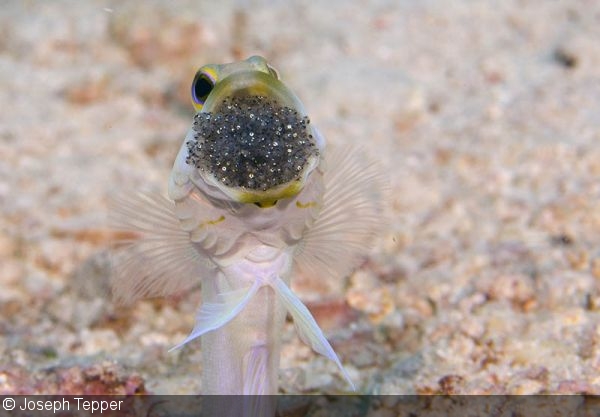







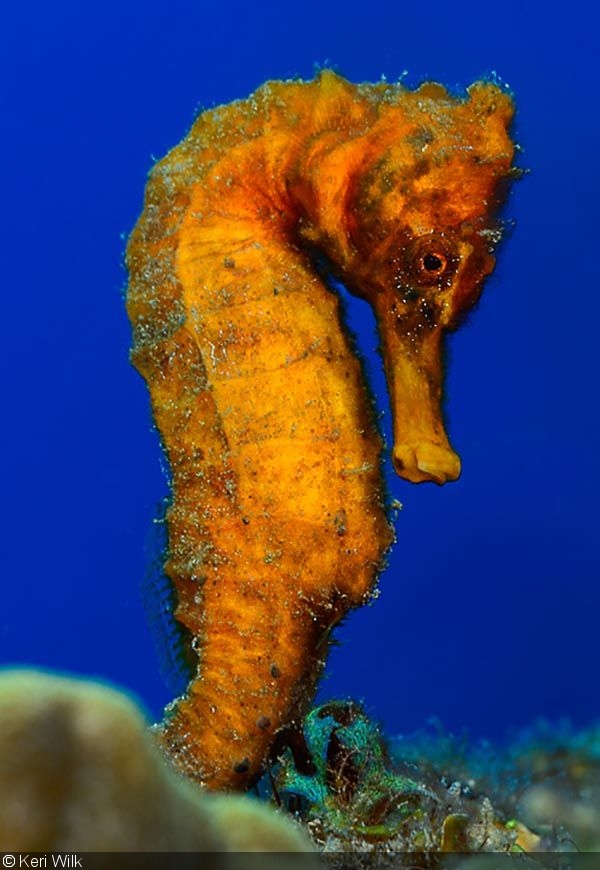

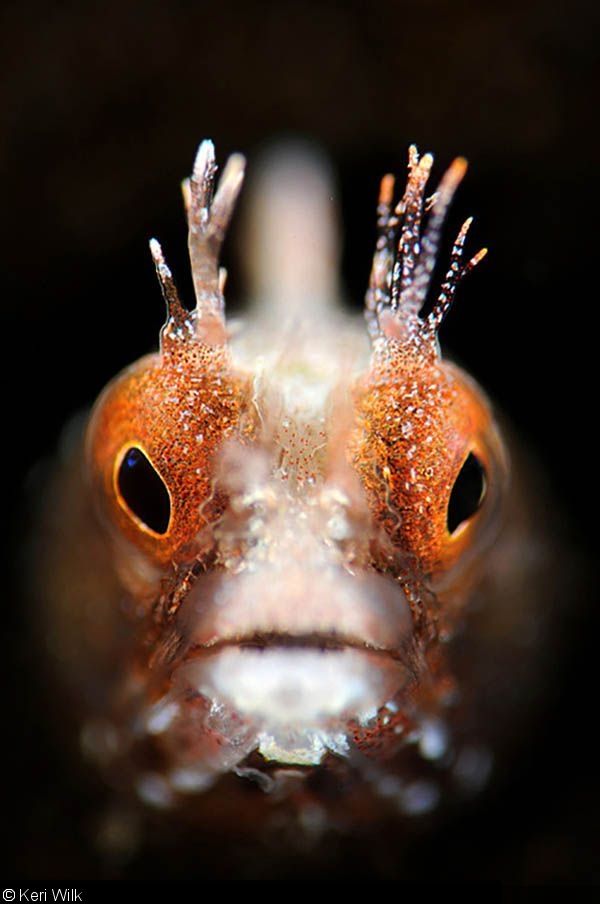



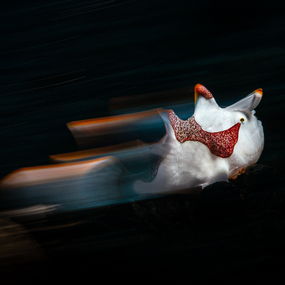
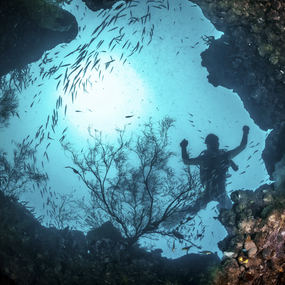


 Antarctica
Antarctica




